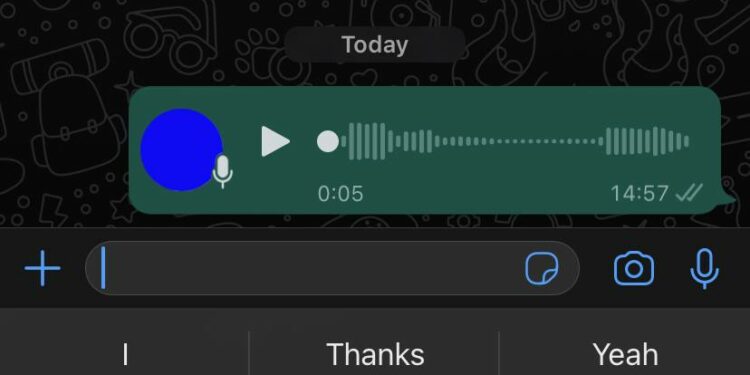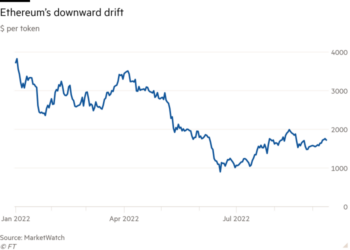Nothing makes me more acutely aware of the pain of an open-plan office than receiving a voice note. I stop everything and pick apart my morass of tangled headphone cords to listen. Perhaps the most transformational innovation in telecoms since texting, they are also the most controversial, both reviled and loved. “People who send voice notes are poison,” one thinkpiece argued.
While leaving a voice note is as simple as tapping the microphone where you’d normally type with the keyboard into WhatsApp or iMessage, listening to them can be awkward. If you simply press play, anyone within earshot will hear. They make demands on your time and attention in a way a text message — readable anywhere, scannable in seconds — does not. “There’s an arrogance to them,” a friend said.
Yet like most new things I initially hate because they seem unnecessary, when really they are just different, I’m a convert. Now when I walk to the shop, I can be heard building tension in a dramatic retelling of a horrendous date directly into my phone.
I am not alone. Since their launch in 2013, voice messages have steadily gained momentum. In March, WhatsApp said its two billion users sent seven billion voice messages a day, 7 per cent of all messages sent on the app.
There is an etiquette to voice texts, though not everyone has mastered the rules. They are inappropriate for dinner plans or sharing WiFi passwords. They can quickly resemble podcasts in their duration.
At first, I resented the self-indulgence, the lack of discipline. Yet there is more scope for storytelling when you don’t have to structure a perfect narrative arc with your thumbs. Parents in my Brooklyn neighbourhood record them while pushing prams, pressing rice crackers into toddler palms. A voice note requires just one hand and no eyes for the busy and overburdened.
They lack the expansive brevity of an emoji, yet give us tone, tangents, the rasp of a voice first thing in the morning. The beauty of audio messages is that they are actually not like texts at all.
During the pandemic, when everything became literally and spiritually remote, voice notes brought humanity into our conversation. They help bridge a communication gap that is even wider, making it easier for people with reading comprehension issues, physical disabilities, non-native speakers, or even those who just do better in person, to communicate in an increasingly text-first world.
Last week in search of comfort, I watched the 1990s TV show Felicity. The main character takes out a voice recorder and tapes (on a cassette!) herself talking, before mailing it to an old friend. It was striking — a voice note via the postal service.
Old texts live in our phones for ever. Yet for me it is listening to saved voicemails from people I’ve lost — silly, undisciplined, funny recordings — that makes them feel closest. On some messaging apps, such as iMessage, voice memos disappear two minutes after being played. I wonder how we will remember all this discourse one day and what will be lost.
Since I moved to New York, voice notes have become my main tool for keeping up with friends across time zones, a way to share detailed stories on short walks and maintain real connection. Sometimes a rambling voice note is the best way to talk when you just don’t know what to say.
When a voice note arrives, it can be the same rush as finding a battered airmail envelope among the bills. I dig out my headphones and begin untangling.
Madison Darbyshire is the FT’s US investment reporter
Follow @FTMag on Twitter to find out about our latest stories first











